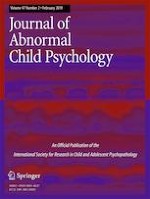28-04-2018
Executive Functioning Heterogeneity in Pediatric ADHD
Gepubliceerd in: Research on Child and Adolescent Psychopathology | Uitgave 2/2019
Log in om toegang te krijgenAbstract
Neurocognitive heterogeneity is increasingly recognized as a valid phenomenon in ADHD, with most estimates suggesting that executive dysfunction is present in only about 33%–50% of these children. However, recent critiques question the veracity of these estimates because our understanding of executive functioning in ADHD is based, in large part, on data from single tasks developed to detect gross neurological impairment rather than the specific executive processes hypothesized to underlie the ADHD phenotype. The current study is the first to comprehensively assess heterogeneity in all three primary executive functions in ADHD using a criterion battery that includes multiple tests per construct (working memory, inhibitory control, set shifting). Children ages 8–13 (M = 10.37, SD = 1.39) with and without ADHD (N = 136; 64 girls; 62% Caucasian/Non-Hispanic) completed a counterbalanced series of executive function tests. Accounting for task unreliability, results indicated significantly improved sensitivity and specificity relative to prior estimates, with 89% of children with ADHD demonstrating objectively-defined impairment on at least one executive function (62% impaired working memory, 27% impaired inhibitory control, 38% impaired set shifting; 54% impaired on one executive function, 35% impaired on two or all three executive functions). Children with working memory deficits showed higher parent- and teacher-reported ADHD inattentive and hyperactive/impulsive symptoms (BF10 = 5.23 × 104), and were slightly younger (BF10 = 11.35) than children without working memory deficits. Children with vs. without set shifting or inhibitory control deficits did not differ on ADHD symptoms, age, gender, IQ, SES, or medication status. Taken together, these findings confirm that ADHD is characterized by neurocognitive heterogeneity, while suggesting that contemporary, cognitively-informed criteria may provide improved precision for identifying a smaller number of neuropsychologically-impaired subtypes than previously described.
